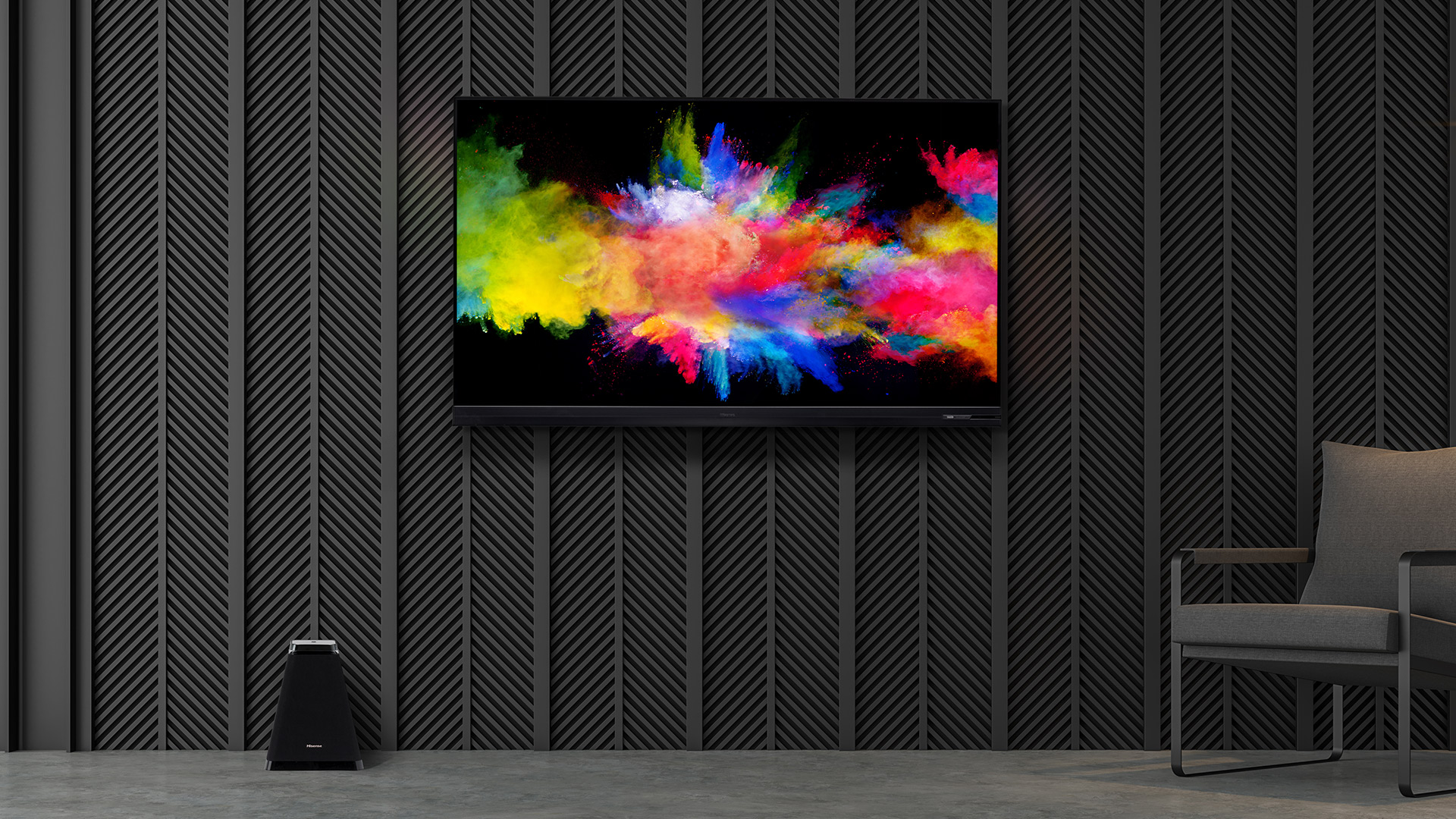Hisense Dual Cell TVs are here, but will they fare better than the O8B OLED?
A similar launch strategy, but very different tech

Hisense has now launched the first of its Dual Cell TV range, and we're very much hoping it doesn't go the way of the maligned Hisense O8B OLED.
Releasing in September, the Hisense 65SX will come first to Australia, though we expect to see it come further afield (US, UK) in the months after – that is, if Hisense sticks to the route map it used with the O8B.
Hisense notoriously experimented with OLED tech with the O8B in 2018-2019, before going on to ditch the technology altogether after producing a middling set with inconsistent performance and (in our testing) numerous bugs and glitches.
The company looked to Dual Cell, instead – which overlays a grayscale 2K panel over a full-color 4K panel, in order to achieve increased contrast and brightness control (read: over two million dimming zones) compared to standard LCD sets.
- Should I buy a Hisense TV?
- Check out the best smart TVs around
- Hisense TV 2021: everything announced this year
The first Dual Cell television is a 65-inch TV called the 65SX, launching at first in Australia – just as the Hisense OLED did before coming to US and UK shores. It's even launching at the same AU$3,499 (around $2,500 / £1,900) price tag that the OLED model came with in 2018, albeit for a 65-inch size rather than the OLED's 55-inch iteration, meaning there is a slight saving.
With Dolby Vision HDR, Atmos audio support, and claims of superior image quality over other ULED sets, there's plenty to be excited about – if Hisense manages to pull it off.
After the crash and burn of Hisense's OLED range, the company is no doubt all in on this alternative tech. With the promise of deep blacks (as with OLED) coupled with high brightness and precise brightness control (as with high-end QLED sets), there's certainly a strong case being made for a Dual Cell set.
Get daily insight, inspiration and deals in your inbox
Sign up for breaking news, reviews, opinion, top tech deals, and more.
Given the issues around the company's last TV technology debut, though, there's more at stake here than a single product range.
My way or the Hi-way
Hisense offers a competitive alternative to many major TV brands, with budget and mid-price sets that offer 4K resolution and high-end HDR formats at a reduced cost.
Corners are inevitably cut to make that happen, often with processing – or, as in the case of the U7QF or U8QF models in the UK, specifically poor motion smoothing.
But Hisense also has ambitions of being known for innovative TV technologies, too, as with its laser TV-projector hybrids. And if it does go after premium tech like OLED, it aims to motivate consumers with a sharp discount – the O8B was the cheapest OLED TV on the market, which is notable even with its issues.
If Hisense can manage to meld high-end tech with relative affordability – without compromising on picture quality or usability to the same extent as the O8B – its Dual Cell range could become a smart choice for those wanting a premium picture at a reasonable price tag. Otherwise, it's just repeating the same mistakes.
- Best 65-inch 4K TV: big screens for any budget
Henry is a freelance technology journalist, and former News & Features Editor for TechRadar, where he specialized in home entertainment gadgets such as TVs, projectors, soundbars, and smart speakers. Other bylines include Edge, T3, iMore, GamesRadar, NBC News, Healthline, and The Times.
